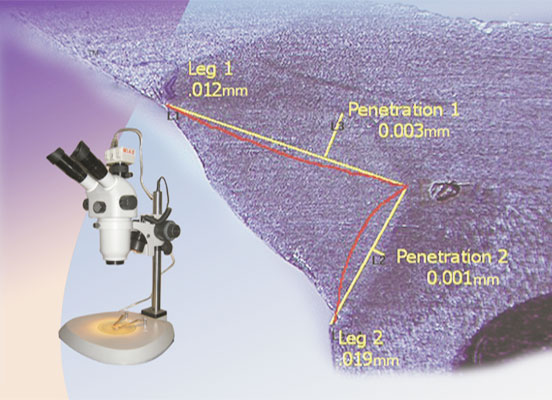Weld Penatration Inspection System
Weld penetration inspection systems are critical components in ensuring the integrity and quality of welds used in various structural applications, from aerospace to construction. This inspection process involves examining the depth of weld penetration to confirm that it meets the required standards for strength and durability.
Weld penetration refers to the depth to which the weld metal has fused with the base metal during the welding process. Adequate penetration is essential to achieve a strong and reliable weld joint. Insufficient penetration can result in weak spots, leading to potential failures under load or stress. Conversely, excessive penetration might indicate potential issues such as weld metal inclusion or burn-through, which can also compromise the weld’s integrity.
The inspection process typically begins with a review of welding procedures and specifications to ensure that the intended weld design and parameters align with industry standards and project requirements. Various methods are employed to assess weld penetration, including visual inspection, ultrasonic testing, radiographic testing, and dye penetrant testing.
Visual inspection is often the first step, where inspectors examine the weld for obvious defects or inconsistencies. While this method can detect surface flaws, it is limited in assessing penetration depth accurately. For a more detailed evaluation, ultrasonic testing is commonly used. This non-destructive testing (NDT) technique involves sending high-frequency sound waves into the weld. By analyzing the reflected sound waves, inspectors can create a profile of the weld’s internal structure, identifying areas of incomplete penetration or other subsurface defects.
Radiographic testing is another powerful NDT method. It uses X-rays or gamma rays to create images of the weld. These images reveal internal features and discontinuities within the weld, including penetration depth. Radiographic testing is particularly effective for detecting hidden flaws and ensuring that the weld penetrates the base metal adequately.
Dye penetrant testing, although less commonly used for penetration inspection, involves applying a liquid dye to the weld surface. After a set period, the excess dye is removed, and a developer is applied to draw out the dye that has seeped into surface cracks or defects. This method is useful for identifying surface discontinuities but does not provide information on internal penetration.
In addition to these methods, advanced technologies such as phased array ultrasonic testing and laser scanning are gaining traction. Phased array ultrasonic testing offers a more detailed and precise analysis of welds by using multiple transducers to produce a composite image of the weld. Laser scanning, on the other hand, can provide high-resolution 3D models of welds, enabling detailed analysis of penetration and overall weld quality.
Regardless of the method used, weld penetration inspection systems are vital for maintaining the safety and reliability of welded structures. They ensure that welds meet specified standards and perform as expected under operational conditions. Proper inspection not only helps in preventing potential failures but also contributes to the longevity and durability of the welded components. As technology continues to advance, the methods and tools for weld penetration inspection are becoming increasingly sophisticated, offering more accurate and efficient ways to assess and ensure weld quality.
Specifications
- MAIS is windows based imaging application.
- Delivers the state of the art imaging solutions on Welding Inspection MAIS.
- This software is powerful and easy to use tool.
- Enhances the ability to quickely and efficiantely handle most criticle Welding Measurements and Documents.
- This software is designed with the welding-cross section measurement in mind.

